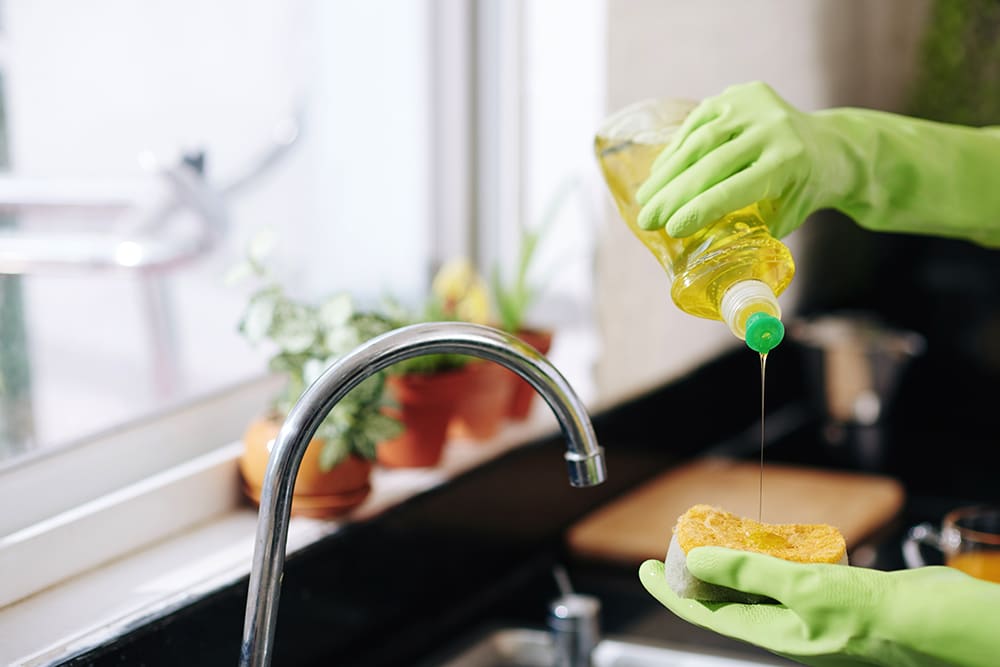A Simple Guide to Phthalates: What They Are and How to Reduce Your Exposure
Let’s face it – keeping a home safe and healthy can feel overwhelming, especially when invisible toxins are sneaking into everyday products. If you’ve ever felt confused reading ingredient labels, you’re not alone. One group of chemicals that’s especially tricky? Phthalates. Here’s why they matter and how to minimize your exposure.
What are phthalates?
Phthalates (pronounced thal-ates) are chemicals used to make plastic more flexible and to help scents last longer in personal care and cleaning products. You’ll often find them in:
- Personal care or cleaning products with “fragrance” on the label. They’re ubiquitous in products like shampoos, moisturizers, deodorants, baby shampoos, hand soaps, glass cleaners, deodorizers, disinfectants, and all-purpose cleaners.
- Vinyl flooring and shower curtains
- Plastic packaging and containers (especially recycling codes 3 and 7)
- Children’s toys and school supplies
They’re almost impossible to spot unless companies voluntarily disclose them – and most don’t.
Why are phthalates a big deal?
Exposure to phthalates is more common than you might think, and it comes with serious health risks. Science links phthalates to multiple health hazards including:
- Hormone disruption (especially with BBP, DBP, and DEHP)
- Premature deaths in adults aged 55-64
- Genital malformations and undescended testes in boys
- Lower sperm counts in men
- Asthma, allergies, and potential links to obesity and diabetes
- Endometriosis in women and reproductive development in rats (DnOP)
- Cardiovascular disease (DEHP)
Here is more on the phthalate health risks.
Where are phthalates hiding?
Here’s the tricky part: manufacturers lump phthalates under the umbrella of “fragrance,” which could mean a cocktail of up to 100 undisclosed ingredients. And because companies aren’t required to list fragrance ingredients individually, it’s up to us to to our own ingredient research.
How to reduce phthalates in your home
- Go fragrance-free: Whether it’s in your family’s personal care products or household cleaners, look for products labeled “fragrance-free” or that fully list fragrance ingredients. But remember that from a regulatory standpoint, manufacturers are not required to list fragrance ingredients on product labels. All they have to list is the word “fragrance”. If you see just that one word on a label, that’s a red flag.
- Rethink your cleaning products: Choose a safer option that’s proven to effectively disinfect and clean without fragrances.
- Switch out plastics: Avoid recycling codes 3, 6 and 7 whenever possible. Swap out plastics for glass, wood, ceramic or stainless steel.
- Ventilate regularly: Open windows, use exhaust fans, and air out new household products.
Your Questions About Phthalates, Answered
What products contain phthalates?
Why are phthalates bad for your health?
How can I avoid phthalates in household products?
Is “fragrance” the same as phthalates?
A Phthalate-Free Alternative for Cleaning
Happily, with Force of Nature, you can effectively disinfect and clean your home without the use of phthalates! Force of Nature is the only fragrance-free and phthalate-free EPA registered disinfectant and multi-surface cleaner. Its antimicrobial ingredient is Hypochlorous Acid (HOCl), which is gentle and effective enough to be used in wound healing, eye care, and veterinary care products. HOCl is as effective as bleach, but gentle enough to be family (and pet) friendly. Force of Nature is proven to kill 99.9% of viruses and bacteria. It even costs up to 80% less per ounce than typical cleaning products – and eliminates single-use plastic bottles. We’re proud to be the only disinfectant and cleaner to earn the Clean Label Project Purity Award and the National Eczema Association Seal of Acceptance. Ready to ditch toxic cleaners? It’s easy to get started with 40% off Bundles with free shipping.




